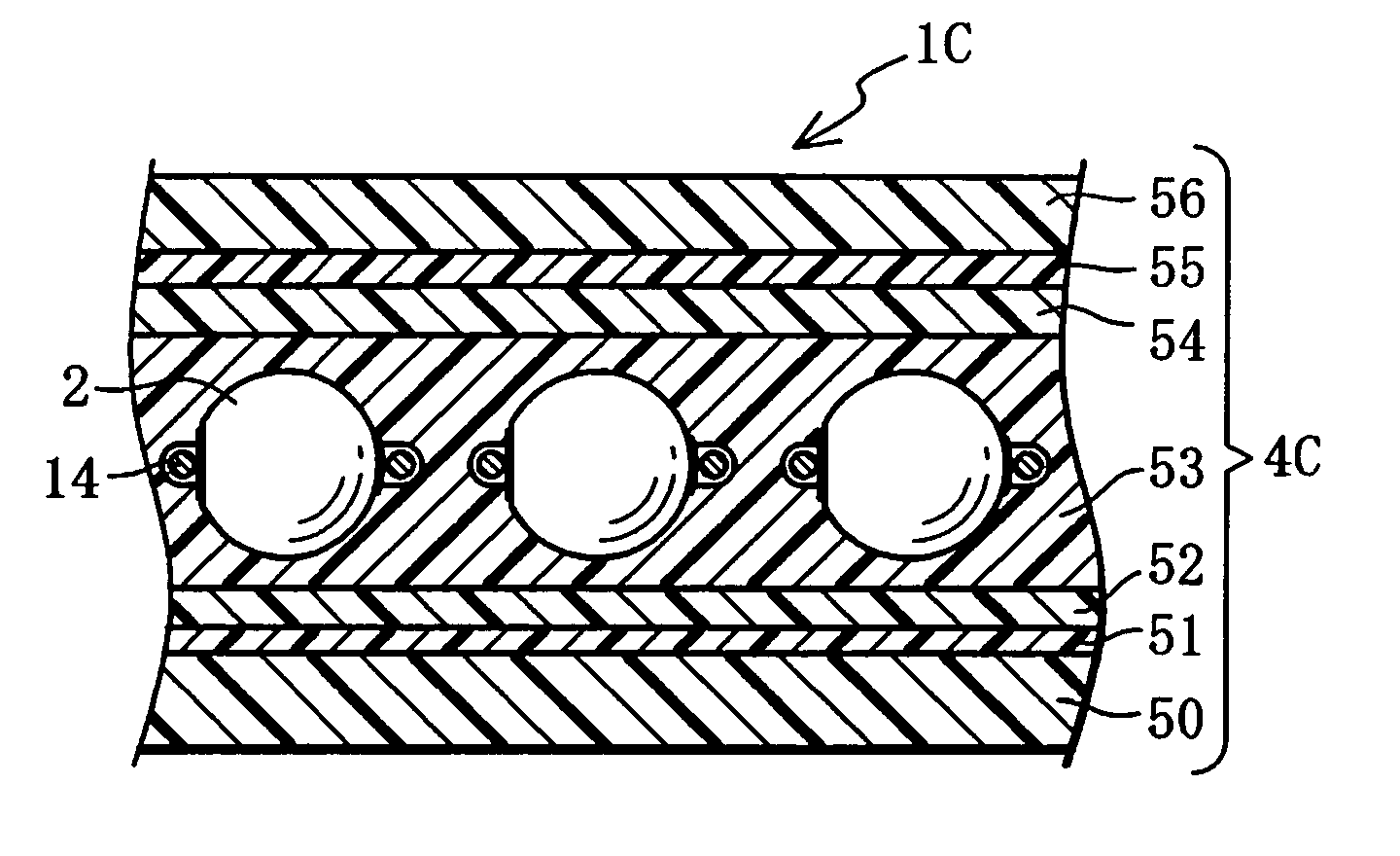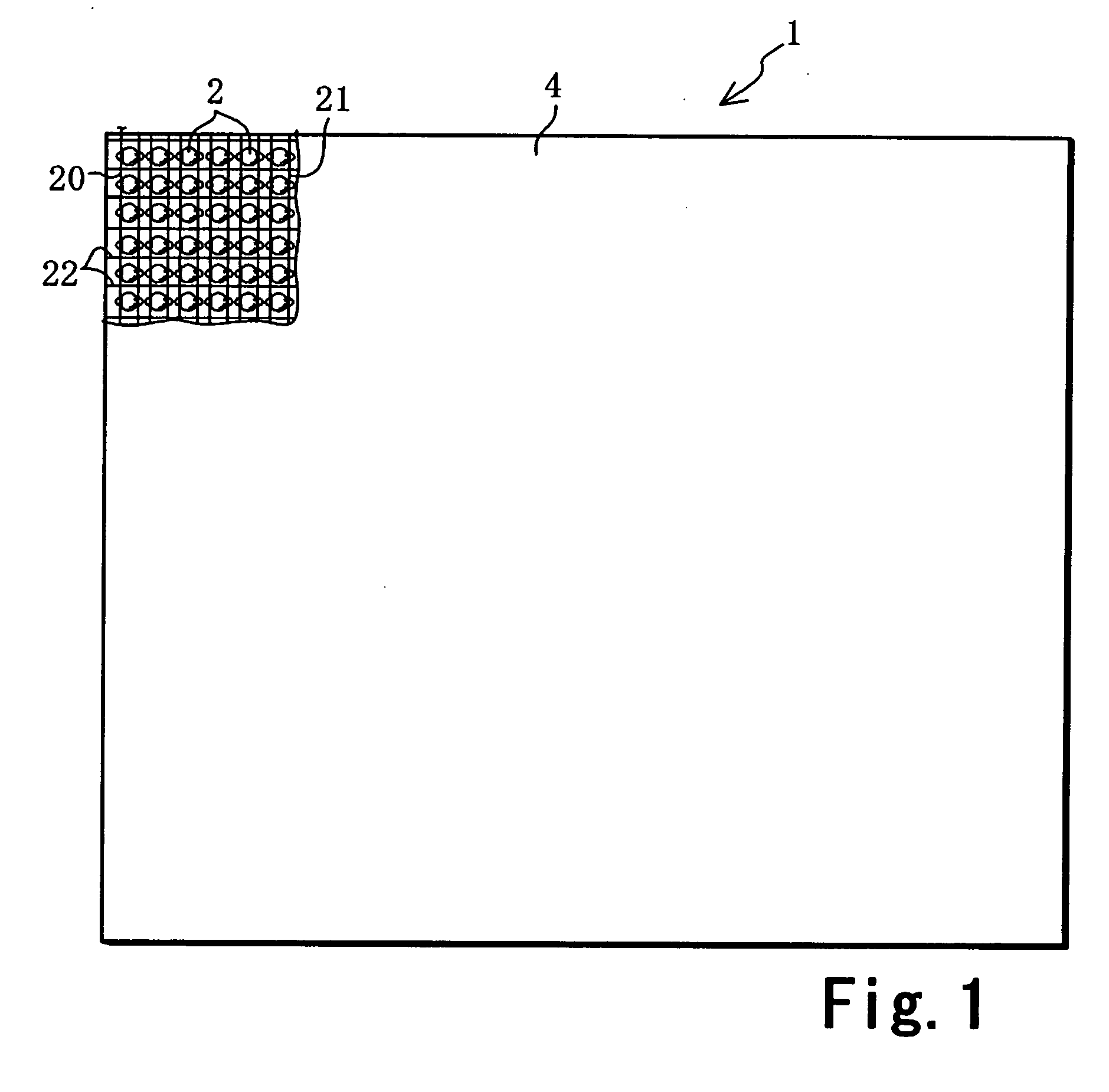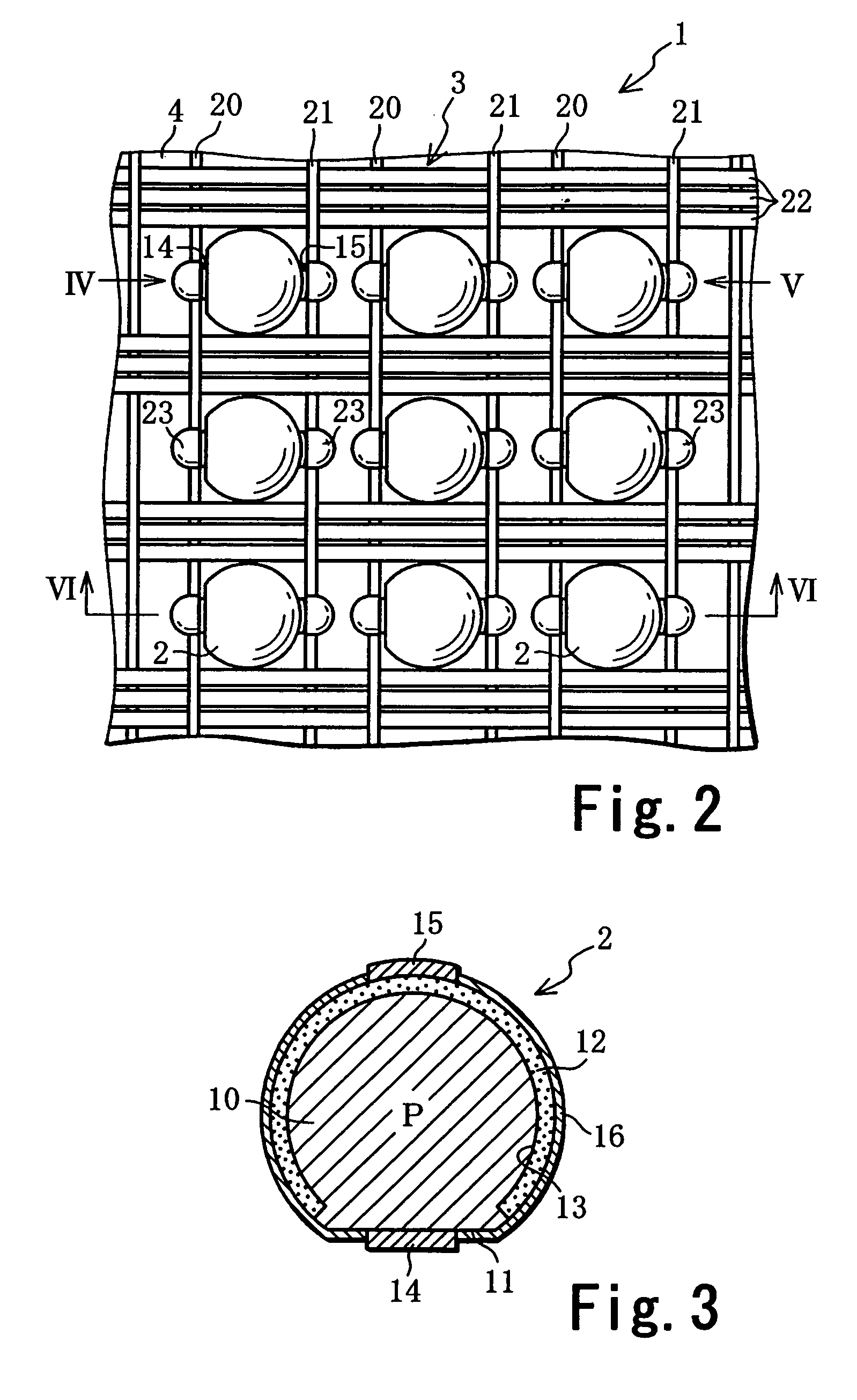Light receiving or light emitting modular sheet and process for producing the same
a technology of light receiving or light emitting modules, applied in the direction of sustainable manufacturing/processing, final product manufacturing, lighting and heating apparatus, etc., can solve the problems of increased production costs, difficult to evaluate the properties and quality of individual solar battery elements, and difficult to say that they constantly utilize light in an efficient manner. , to achieve the effect of reliable production of high-quality module sheets, easy connection and simplified production process
- Summary
- Abstract
- Description
- Claims
- Application Information
AI Technical Summary
Benefits of technology
Problems solved by technology
Method used
Image
Examples
embodiment 3
3) Modified Embodiment 3
[0089] The light receiving module sheet may be produced by a roll-to-roll technique. When a roll-to-roll technique is used, the mesh member is fixed at both ends in the width-wise direction using heat-resistant resin films such as polyimide films. Sprocket holes are formed in the heat-resistant resin films. The sprockets holes are engaged in sprockets to roll the mesh member in or out.
embodiment 4
4) Modified Embodiment 4
[0090] In the afore-mentioned embodiment, the spherical elements of the light receiving module sheet are solar battery elements. However, the spherical elements are not restricted to solar battery elements and may be spherical photodiodes or light emitting diodes. These spherical photodiodes or light emitting diodes have nearly the same structure as the solar battery elements 2 described above and are described in detail in WO98 / 15983 by the inventor of this application and, therefore, their explanation is omitted. In a light emitting module sheet having light emitting diodes, a forward electric current is applied to the light emitting diodes, the electric energy is converted to optical energy by the pn junction, light having a wavelength depending on the crystal and diffused layer material is generated at the pn junction and externally emitted. Light is emitted in all directions from a light emitting module sheet having spherical light emitting diodes. Alter...
embodiment 5
5) Modified Embodiment 5
[0091] In the afore-mentioned embodiment, the solar battery elements in all columns are connected in series. However, multiple switches may be provided to change the number of columns to be connected in series, and are turned on / off by a controller depending on light intensity and required electric energy.
PUM
 Login to View More
Login to View More Abstract
Description
Claims
Application Information
 Login to View More
Login to View More - R&D
- Intellectual Property
- Life Sciences
- Materials
- Tech Scout
- Unparalleled Data Quality
- Higher Quality Content
- 60% Fewer Hallucinations
Browse by: Latest US Patents, China's latest patents, Technical Efficacy Thesaurus, Application Domain, Technology Topic, Popular Technical Reports.
© 2025 PatSnap. All rights reserved.Legal|Privacy policy|Modern Slavery Act Transparency Statement|Sitemap|About US| Contact US: help@patsnap.com



